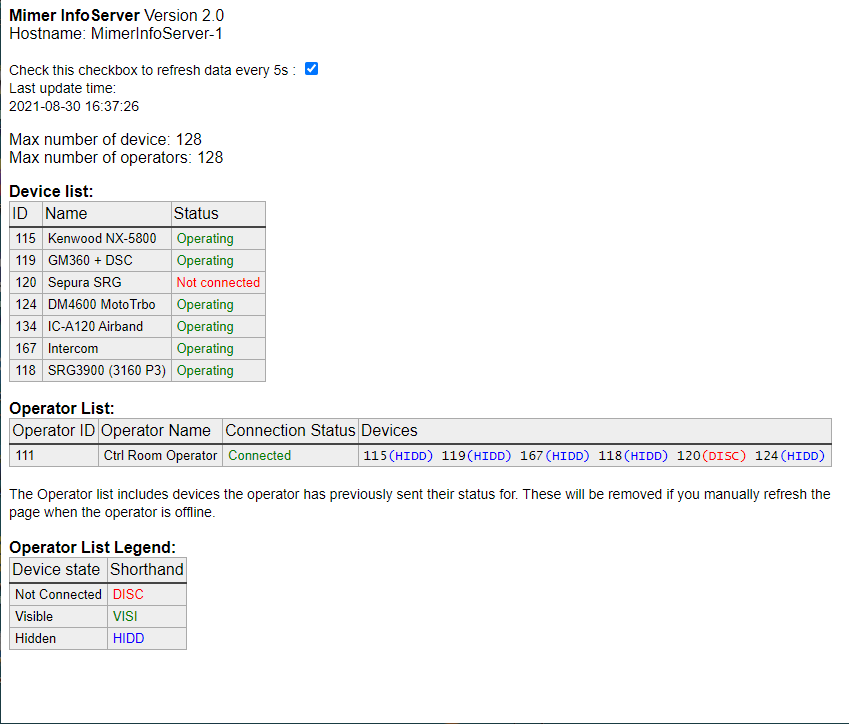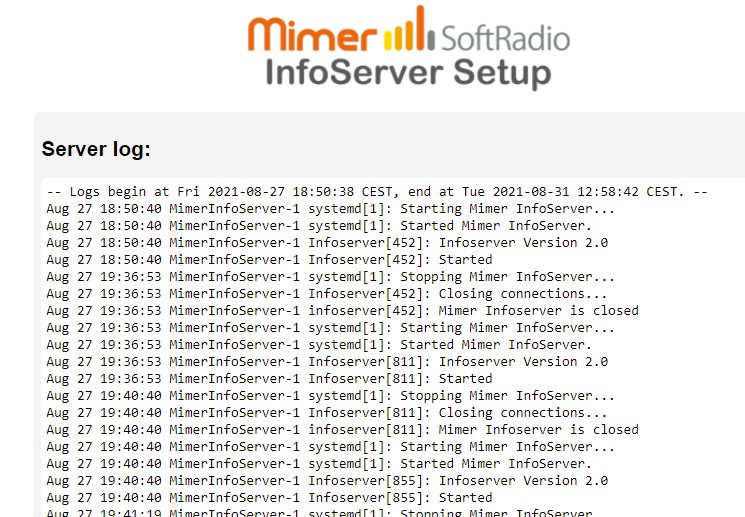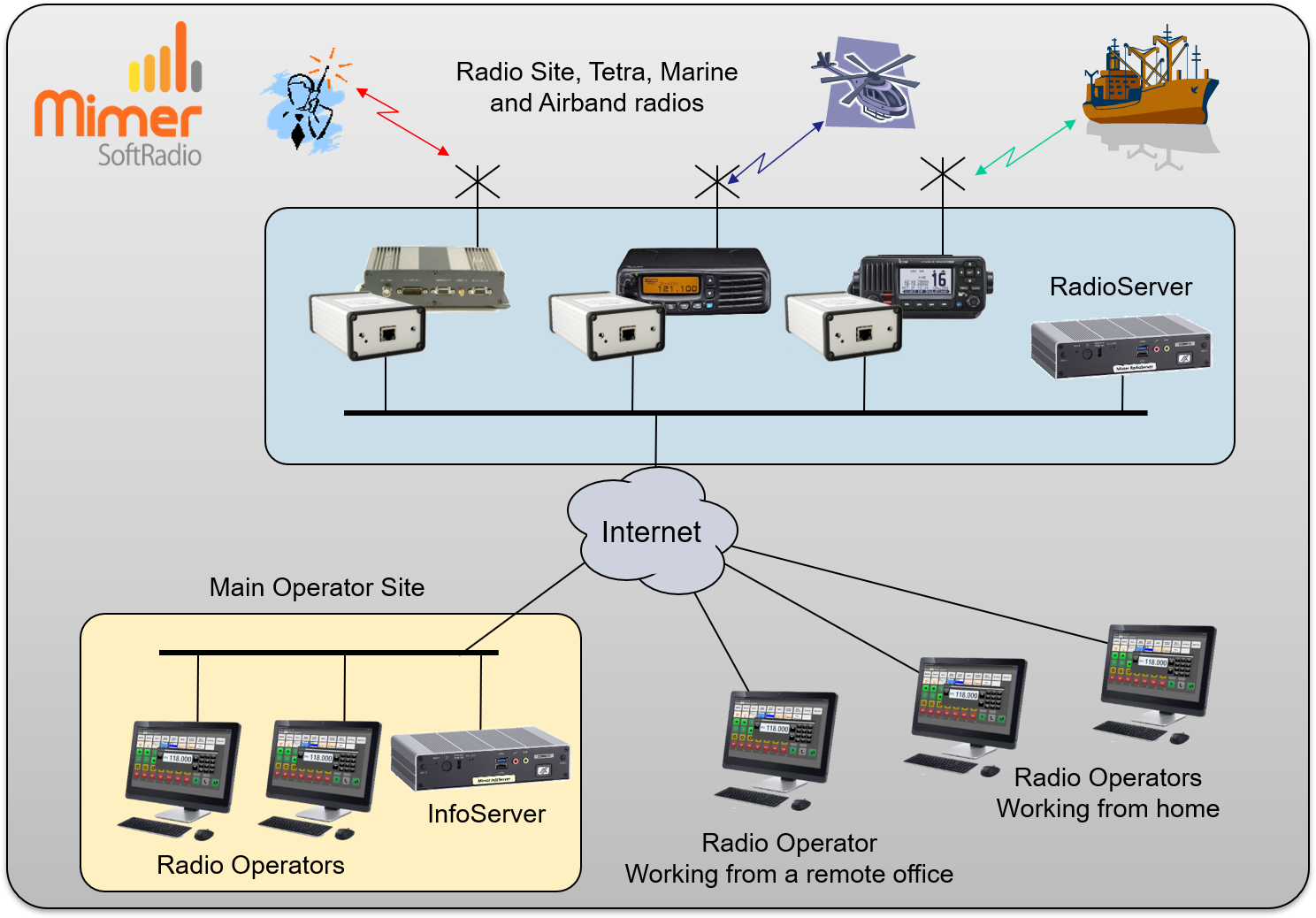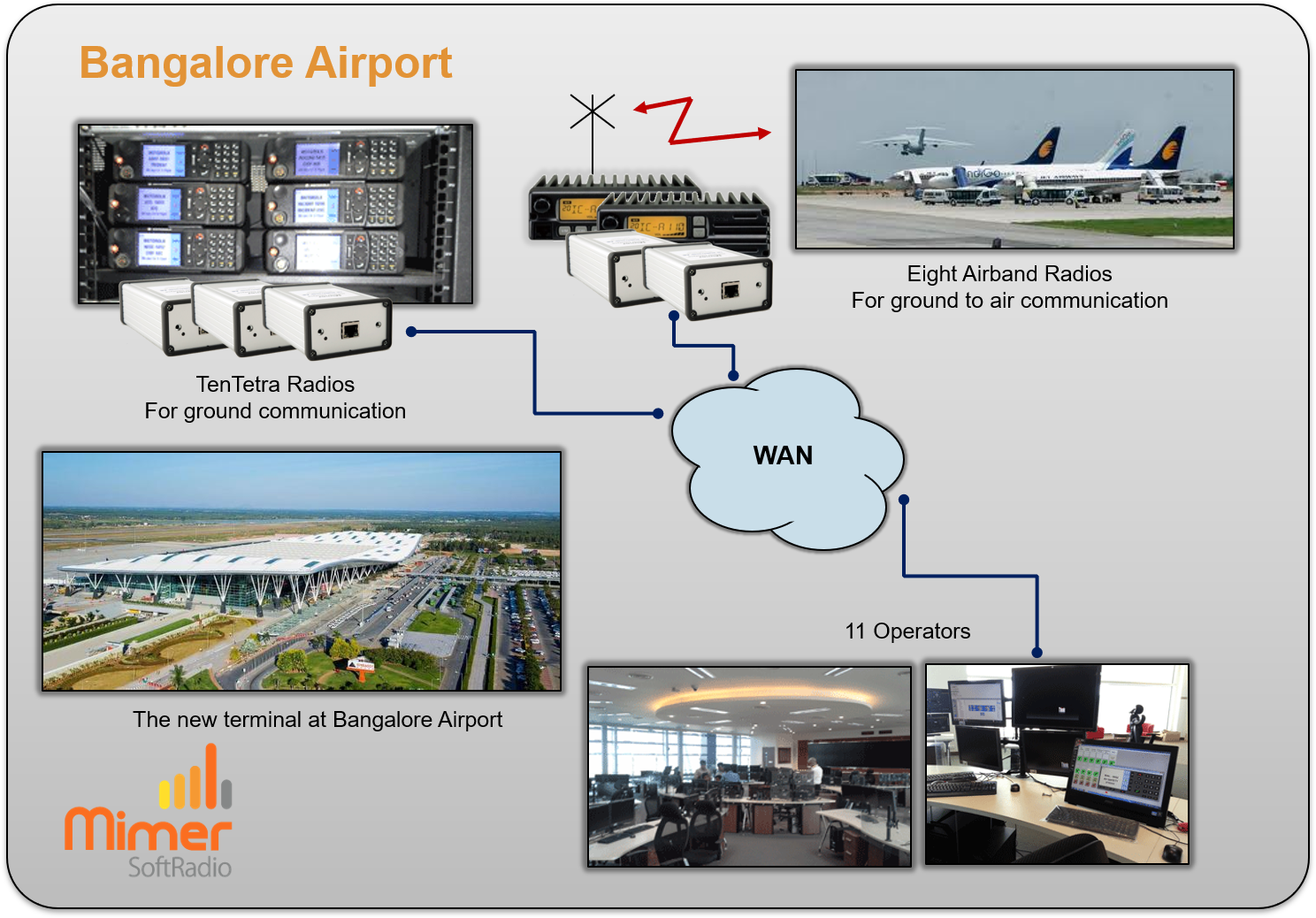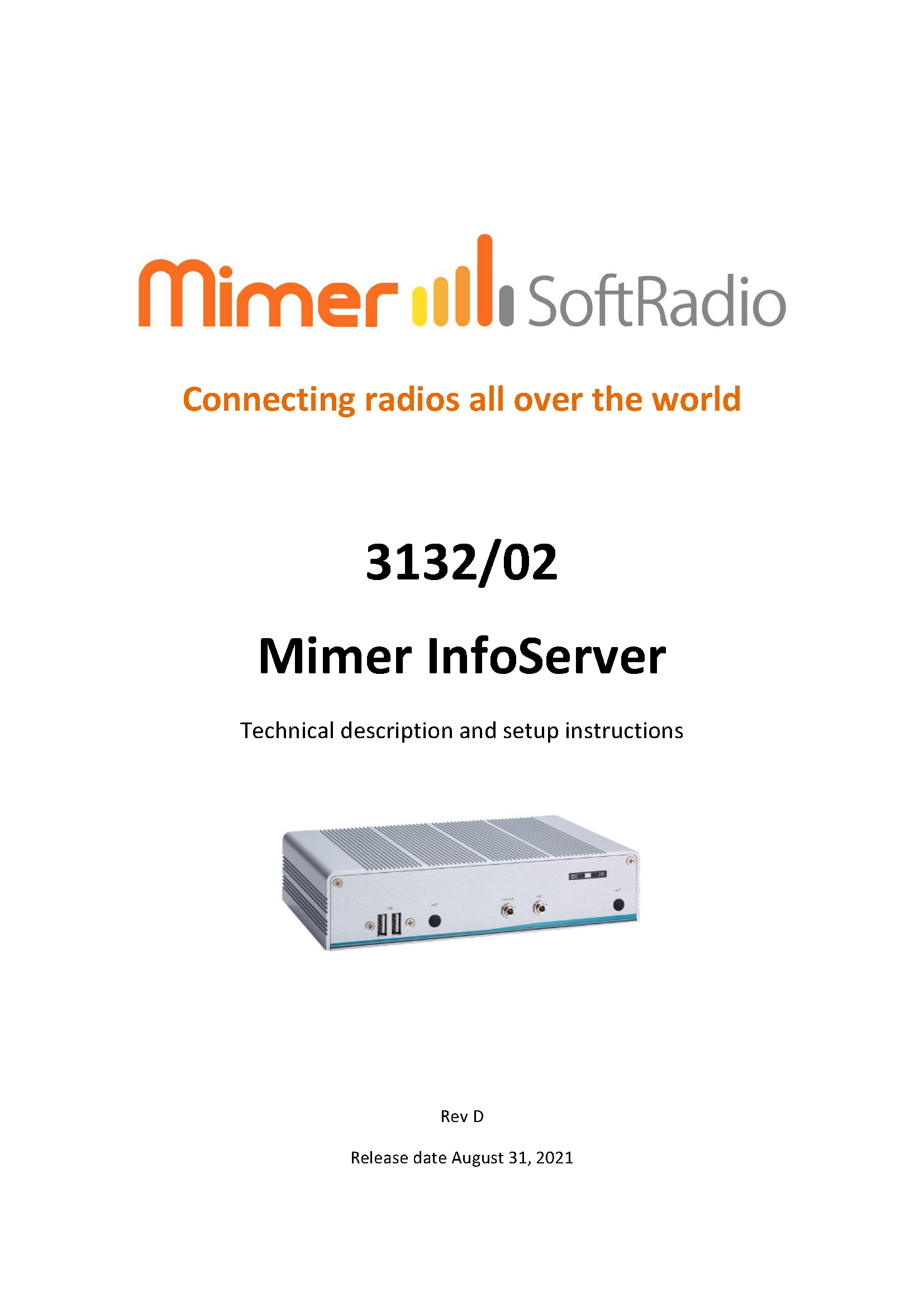System Monitoring
Monitoring your system to know if there are any faults.
Most faults are shown in the operator GUI so that the operator can alert a technician. But in some cases it is good to be proactive and get the alert before an operator even notices the problem.
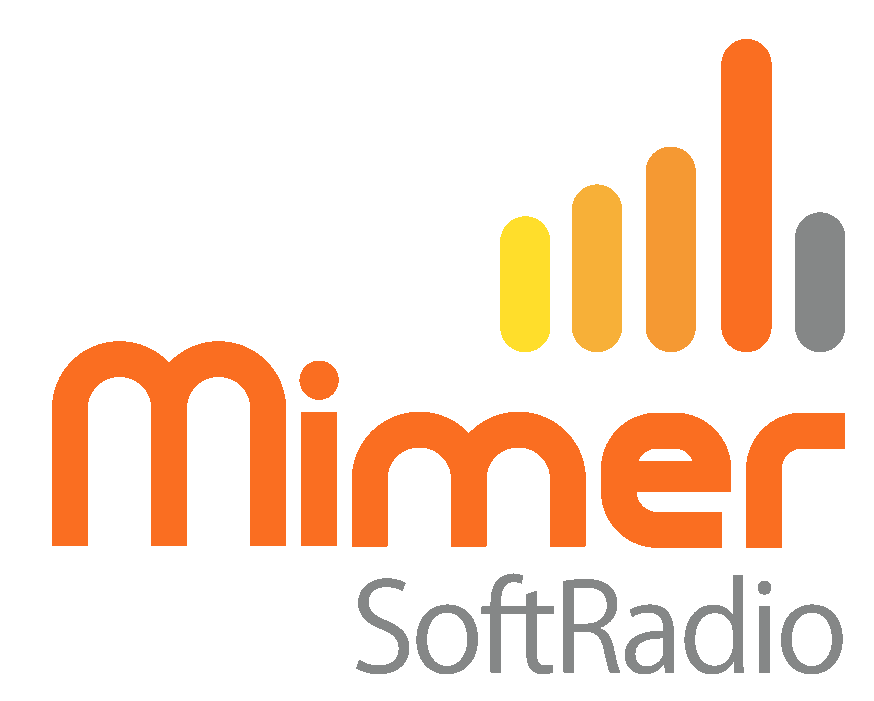
Mimer InfoServer
Through the use of a small Linux server running the software Mimer InfoServer you can keep track of all devices in the Mimer SoftRadio system and also all operators and even see what radios each operator is logged on to.
This is helpful in systems where you need to know that each radio is being monitored, at least by one operator.
The server is checked through an ordinary web browser.
System exampel with seven devices and one operator
To activate the monitoring function from each operator, an option needs to be installed in the Mimer SoftRadio software (3298 – Mimer User Status Report). It will then report connected radios etc to a predefined IP-address where the InfoServer is.
Server Log
The server has a built-in log function that shows in detail every connection to the server. This can be useful when setting up a system or when fault finding a system.
Offshore system using a Mimer InfoServer placed in the operator network
Mimer InfoServer is used at Bangalore Airport in India
Mimer InfoServer
Dimensions:
200x120x50mm, plus connectors, 1050 grams
Power:
Runs on 12VDC, 3,5A, through an adaptor that needs 100-240VAC
Setup instructions can be found on the Technical Download page
An option is needed in each SoftRadio operator client, so that reports are sent to the InfoServer. 3298 – UserStatusReports
Virtual InfoServer
Mimer InfoServer is, as standard, delivered pre-installed on a SolidStateDisk mounted in a compact industrial x86 computer, as described above.
However some customers prefer to run the InfoServer on a hardware platform they are used to. The InfoServer can therefor also be delivered as an VDMK-file to be run on a virtual computer using Oracle Virtual Box or VMWARE. The Virtual machine will run a 32-bit Debian Linux machine. The virtual disk will be up to 4GB in size and requires at least 1GB of RAM (2GB recommended).
The current virtual machine file has been created and tested using Virtual Box version 6.1.
SNMP
The InfoServer implements an SNMP agent that supports SNMP v2c and v3. It is configurable to respond to all standard requests supported by a standard Debian Linux system’s SNMP daemon (including the System objects from RFC-1213).
Functionality that is standard of the Linux SNMP daemon such as monitoring of these standard objects, as well as setting up SNMP notifications (previosly called traps) for them, can be configured.
The InfoServer also has Mimer-specific objects, as described in a MIB file.
These include, but are not limited to:
- number of expected devices
- number of devices with failing connection
- number of expected operators
- number of devices not visible at any operator
- number of devices not connected to any operator
SNMP notifications for these additional values can be set up with configurable severity like Major, Minor and Warning.
SNMP notifications for events such as devices going offline or online or losing connection to any operators can be generated and these are also described in the MIB file.

